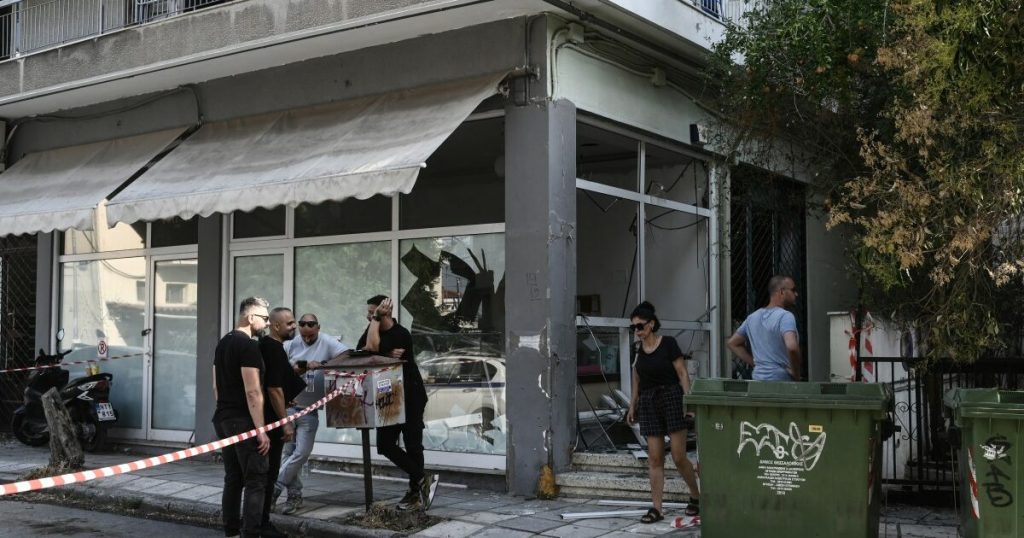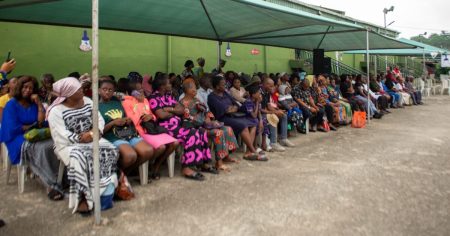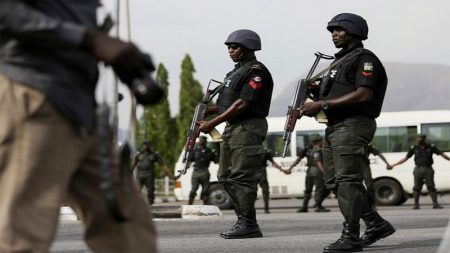On an otherwise unremarkable Saturday morning, the tranquility of Sikies, a suburb nestled near Greece’s second-largest city, Thessaloniki, was shattered by a powerful explosion that ripped through the ground floor of an apartment building. The blast, whose precise cause remains under investigation, sent shockwaves through the neighborhood, injuring two passersby and leaving a trail of destruction in its wake. Six cars parked near the building were damaged, their windows shattered by the force of the explosion, and adjacent buildings also bore the scars of the blast, their windows similarly broken. The incident immediately drew the attention of anti-terror police, who are meticulously probing the circumstances surrounding the detonation, trying to piece together the puzzle of what transpired.
The apartment building, now bearing the visible wounds of the explosion – gaping holes marring its ground floor facade – is reportedly the residence of the head of a prison officers’ union. This detail has added another layer of complexity to the investigation, prompting authorities to explore all possible angles, including whether the blast was a targeted attack. The two injured passersby, a young man and woman, were unfortunately caught in the wrong place at the wrong time, suffering injuries from flying shards of glass. They were subsequently treated for their injuries, thankfully none of which were life-threatening.
While the investigation is still in its early stages, the incident has inevitably drawn comparisons to a previous explosion in Thessaloniki in May. In that instance, a woman with alleged ties to a jailed bank robber was killed by an explosion outside a bank. The robber, currently incarcerated, faces accusations of terrorist activities, including sending a parcel bomb to the Thessaloniki appeals court in February of the previous year. The proximity of these two explosive events, both occurring in Thessaloniki within a relatively short timeframe, raises questions about potential connections and patterns. Investigators will undoubtedly be examining any possible links between the two incidents, searching for common threads that might shed light on the motivations and perpetrators behind the recent blast.
The explosion in Sikies underscores the complex security landscape in Greece and highlights the ongoing challenges faced by law enforcement agencies in combating various forms of violence, including potential acts of terrorism. The incident serves as a stark reminder of the vulnerability of civilian populations, even in seemingly peaceful suburban settings. As the investigation unfolds, it will be crucial for authorities to maintain transparency and keep the public informed about their findings. This will not only help to allay public concerns and anxieties but also foster trust and cooperation between law enforcement and the community.
The blast in Sikies also raises broader questions about the effectiveness of current security measures and the need for enhanced vigilance. Are there gaps in intelligence gathering or security protocols that need to be addressed? Are there underlying social or political factors that might be contributing to such acts of violence? These are complex questions that require careful consideration and a comprehensive approach involving not just law enforcement but also other stakeholders, including community leaders, policymakers, and social service providers.
In the aftermath of the explosion, the residents of Sikies are left grappling with the shock and uncertainty of what transpired. The incident serves as a stark reminder of the fragility of peace and security, even in seemingly ordinary settings. As the investigation progresses, the hope is that the perpetrators will be brought to justice and that measures will be taken to prevent similar incidents from occurring in the future. The incident also highlights the importance of community resilience and the need for collective efforts to build a safer and more secure environment for all.














